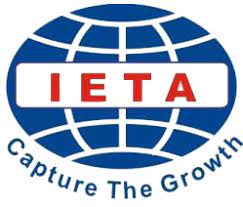THE USE OF INFORMATION GAP ACTIVITIES IN TEACHING SPEAKING (Classroom Action Research at SMK)
 ),
), (1) SMK N 1 Padang Jl. M. Yunus, Lubuk Lintah, Kuranji, Kota Padang, Sumatera Barat 25175
 Corresponding Author
Corresponding Author
Copyright (c) 2017 Lingua Didaktika: Jurnal Bahasa dan Pembelajaran Bahasa
DOI : https://doi.org/10.24036/ld.v10i2.6418
Full Text:
 Language : en
Language : en
Abstract
Abstract
The purpose of the research was to test to what extend the applying Information Gap Activities could improve the students’ speaking ability and how students respond about the use of these activities. Classroom action research procedures (plan, act, observe and reflection) were used to study the process and participants outcomes. The participants of this research were the twelfth year students of Drawing Department A of SMK Negeri 1 Padang consisted of 23 students. One of English teachers took part in the research as collaborator to assist the implementation of information gap activities and to observe the outcomes. The research was conducted in two cycles with four meetings for each. Observer played a role in evaluating, suggesting, and revising the program. Data from the second cycle were presented to show the final outcomes and changes. Data were collected through observation checklist, test, and interview. The result of the research indicated that the implementation of information gap activities can better improve the students’ speaking ability. Students’ centered class included pair work and group work also contributed to improve the outcomes. Moreover, students were active to interact with their teacher and other students. The students participated at all activities in the class. The students showed the good responses about the use of information gap activities in teaching speaking. Finally, the classroom action research process itself helped students and teacher reflect on their successes and failures in teaching learning process.
Key words: speaking ability, information gap activities
Abstrak
Tujuan dari penelitian ini adalah untuk menguji sejauh mana penerapan Information Gap Activities dapat meningkatkan kemampuan berbicara siswa dan bagaimana siswa menanggapi tentang penggunaan kegiatan ini. Prosedur penelitian tindakan kelas (plan, act, observasi and refleksi) digunakan untuk mempelajari proses dan hasil peserta. Peserta penelitian ini adalah siswa kelas dua Drawing Department A SMK Negeri 1 Padang yang terdiri dari 23 siswa. Salah satu guru bahasa Inggris ikut serta dalam penelitian ini sebagai kolaborator untuk membantu pelaksanaan kegiatan kesenjangan informasi dan untuk mengamati hasilnya. Penelitian dilakukan dalam dua siklus dengan empat pertemuan untuk masing-masing. Pengamat memainkan peran dalam mengevaluasi, menyarankan, dan merevisi program. Data dari siklus kedua dipresentasikan untuk menunjukkan hasil akhir dan perubahan. Data dikumpulkan melalui daftar periksa observasi, tes, dan wawancara. Hasil penelitian menunjukkan bahwa pelaksanaan kegiatan gap informasi dapat lebih meningkatkan kemampuan berbicara siswa. Kelas yang berpusat pada siswa termasuk kerja pasangan dan kerja kelompok juga berkontribusi untuk memperbaiki hasil. Selain itu, siswa aktif untuk berinteraksi dengan guru dan siswa lainnya. Para siswa berpartisipasi dalam semua kegiatan di kelas. Para siswa menunjukkan tanggapan yang baik tentang penggunaan informasi kesenjangan kegiatan dalam mengajar berbicara. Akhirnya, proses penelitian tindakan kelas itu sendiri membantu siswa dan guru merenungkan keberhasilan dan kegagalan mereka dalam proses belajar mengajar.
Kata Kunci: speaking ability, information gap activities
Keywords
References
Harmer, J. (2003). How to teach English. New York: Longman Inc.
Lawtie, F. (2004). Teaching speaking skillls 2. Overcoming classroom problems url: www. Teachingenglish.org.uk/think. Retrieved on March 10, 2014.
Raptou, V. (2002). Using information gaps activities in the second language classroom. http:/www.caslt.org. Retrieved on April 5, 2014.
Richard, J. C. (2003). Developing classroom speaking activities. http://www.professorrichard.com. Retrieved on April 15, 2014.
Rivers, W.M. (1987). Interactive language teaching. Cambridge: Cambridge University Press.
Shumin, K. (2003). Factors to consider: Developing adult EFL students speaking activities. Cambridge: Cambridge University Press.
Ur. P. (1996). A course in language teaching: Cambridge: Cambridge University Press.
Widdowson, HG. (1994). Teaching language as communication. Oxford: Oxford University Press.
Zhang, L. (2004). What information gaps activities can teach us in TESOL. http://linguist.org.cn/doc/su. Retrieved on July 11, 2014.
 Article Metrics
Article Metrics
 Abstract Views : 3625 times
Abstract Views : 3625 times
 PDF Downloaded : 1224 times
PDF Downloaded : 1224 times
Refbacks
- There are currently no refbacks.
Copyright (c) 2017 Lingua Didaktika: Jurnal Bahasa dan Pembelajaran Bahasa

This work is licensed under a Creative Commons Attribution-NonCommercial 4.0 International License.









